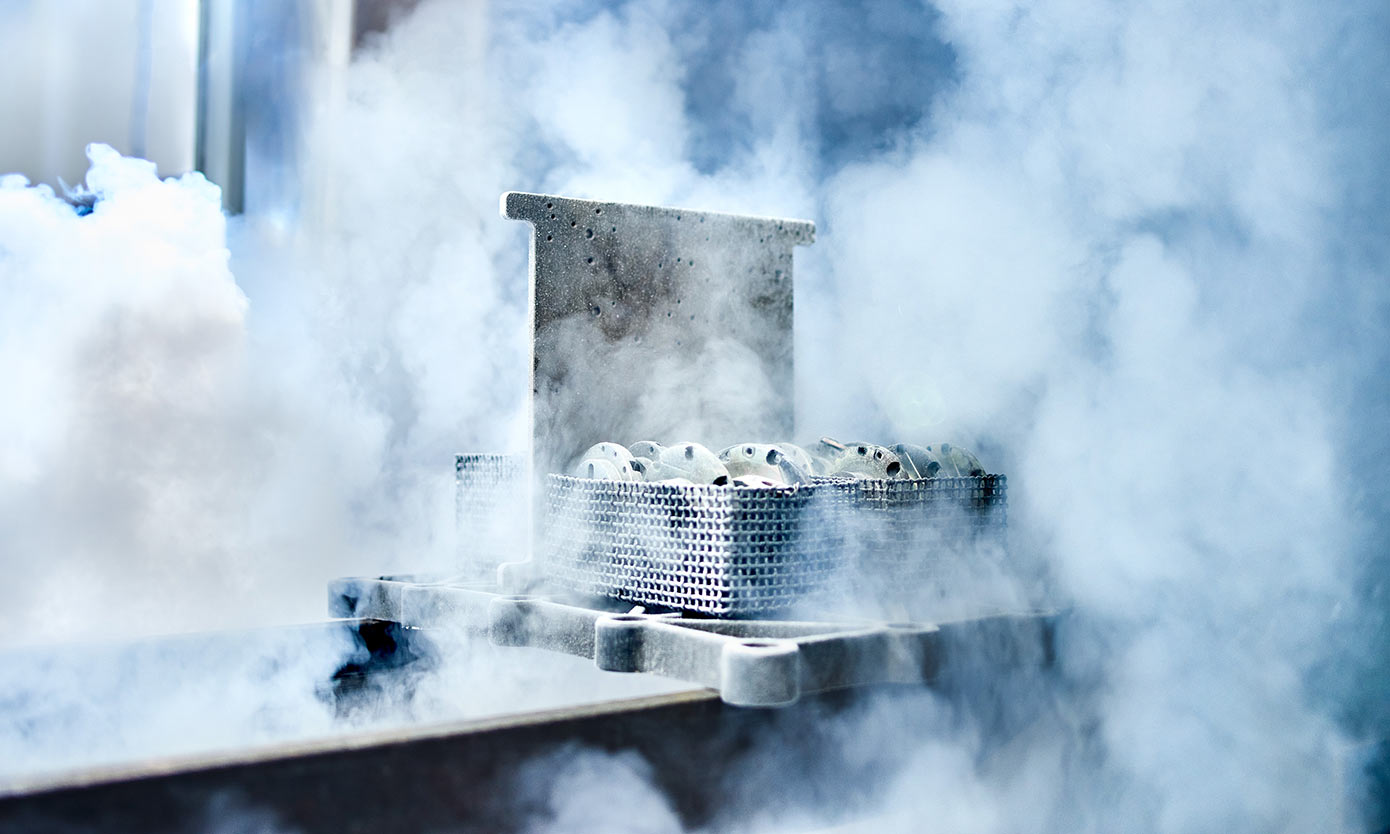
PROCEDURE
Deep freezing
During deep-freezing, the steel is cooled to a temperature of -70°C to -150°C after hardening, which causes the retained austenite to be transformed into martensite.

Deep-freezing for particularly dimensionally stable components
Your perfect component is our passion. That is why we offer options for further improving the properties of hardened components over and above the classic hardening processes.
The process
Depending on the material used, a usually undesirable unstable phase remains in the steel after heat treatment - the retained austenite.
The targeted transformation of this phase by combining conventional heat treatment techniques with deep-freezing is often the most technically and economically viable method of achieving the desired material properties and preventing structural changes during use.

Hardness through controlled cooling
Our state-of-the-art deep-freeze system enables the realisation of controlled temperature curves.
The controlled cooling of the steel after hardening to a temperature of -70°C to -150°C leads to a transformation of the retained austenite into martensite, the hardening carrier in the steel. This makes the component extremely hard and dimensionally stable and does not undergo any changes during use. This process is fully documented by the state-of-the-art control system at HTR. The throughput time of the entire treatment process is hardly affected by the holding time of around one hour.
Key figures

Temperature:
down to -150 °C

Machine size:
1200 x 900 x 900 mm

Max. Loading weight*
1.500 kg
*per batch for standard sizes and treatments

Get a quote
Request a free and non-binding
offer from us now!
Info!
For the preparation of your individual offer
we need the following information from you:
- Material
- Weight and quantity
- dimensions


Do you have any questions?
The HTR team will be happy to advise you!






